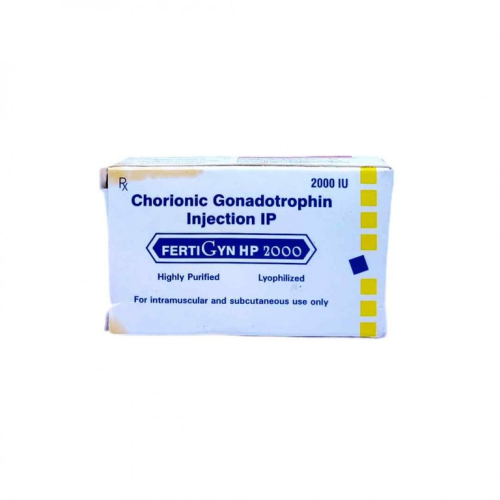Sun Pharma Fertigyn 2000IU
- Brand: Sun Pharma
- Product Code: Sun Pharma Fertigyn 2000IU
- Availability: In Stock
-
$38.00
- Active substance: Human Chorionic Gonadotropin
- Manufacturer: Sun Pharma
- Unit: 1vials (2000.00IU) FertigynActive ingredient: Human Chorionic GonadotropinAlternate names: HCG, Gonado, Ovidrel, Pregnyl, PubergenActive half-life 64 hours
Human Chorionic Gonadotropin (HCG) is a potent polypeptide hormone present in pregnant women. It is utilized therapeutically for various conditions, including cryptorchidism, female infertility, hypogonadism (low testosterone), and weight management.
Many anabolic steroid users also incorporate HCG as a complementary treatment during or after steroid cycles. When using steroids, HCG is thought to mitigate the hormonal suppression that steroids can cause. Post-cycle, HCG is used to facilitate recovery and improve the efficiency of the body's natural testosterone production.
Effects of Gonadotropin:
One of the main contemporary applications of HCG is as a dietary supplement. The HCG diet has gained traction in Western medicine, though its overall effectiveness remains highly contested. The American Medical Association and the American Society of Bariatric Physicians have both criticized the HCG diet, asserting that any resultant weight loss is primarily due to the starvation that accompanies such a regimen, which usually involves a caloric intake of only 500 calories per day. HCG does not contribute to metabolic enhancement, as it lacks thyroid-stimulating capabilities, does not act as a beta-2 stimulant, and neither suppresses appetite nor possesses fat-burning attributes. While some physicians report successful outcomes with the HCG diet, the starvation aspect raises concerns as it is unsustainable for long-term health. There's currently no substantial evidence to suggest the HCG diet independently causes weight loss that wouldn’t occur with the same caloric restriction alone. The discourse surrounding this diet is likely to continue for years ahead.
For anabolic steroid users, the effects of HCG can be categorized based on cycle support and post-cycle therapy (PCT). Since anabolic steroids can significantly suppress natural testosterone production, leading to a temporary drop in hormone levels after cessation, many users adopt PCT strategies to accelerate recovery. While natural testosterone levels will eventually normalize, the recovery process can be slow, leading to loss of muscle mass due to increased cortisol levels. Most steroid users initiate a PCT plan to speed up recovery, which won’t restore hormone levels to normal immediately but will help maintain adequate testosterone levels during the recovery phase.
Numerous PCT protocols exist, most involving selective estrogen receptor modulators (SERMs) like Nolvadex (Tamoxifen Citrate) and/or Clomid (Clomiphene Citrate). Some individuals find that beginning a PCT regimen with HCG before introducing SERMs may enhance overall recovery, as HCG mimics luteinizing hormone (LH) and prepares the body for subsequent SERM treatment.
Another benefit of HCG for anabolic steroid users occurs during steroid cycles. The suppression of natural testosterone production from steroid use can lead to testicular atrophy. Supplementing with HCG can maintain testicular size. While this is more of a cosmetic benefit without direct strategic advantages, it may help ease the transition back to natural testosterone production after steroid use ends. However, caution is required since the body can easily become reliant on HCG for LH, which might not be a concern for low testosterone patients but necessitates careful management for others. Overuse of HCG can result in more harm than many anabolic steroids. While its use can be beneficial, it must be approached responsibly to prevent dependency.
Potential side effects:For anabolic steroid users, particularly those utilizing HCG during cycles, a standard dose is often 250 IU every 4-5 days, which is sufficient for the desired results and should be adhered to prevent jeopardizing future natural testosterone production.
For PCT, two effective protocols exist. One method consists of administering 1,500-4,000 IU every 3-4 days for 2-3 weeks, after which SERM therapy is initiated. Alternatively, a more efficient approach might be to use HCG daily at 500-1,000 IU for 10 consecutive days, followed by SERM therapy.
Timing is crucial when using HCG in PCT. If your steroid cycle has ended with long-acting esters, HCG therapy begins 10 days after the last injection, followed by SERM therapy. Conversely, if small ester steroids were used, start HCG therapy 3 days after the last injection, then proceed with SERM therapy after concluding HCG treatment.

